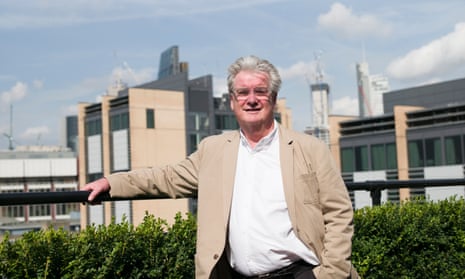Architects must reclaim leadership of house building after decades of being sidelined through complex contracts such as the one used on Grenfell Tower, the profession’s new leader has warned.
Ben Derbyshire, a leading housing architect who has been elected president of the Royal Institute of British Architects, said that without reform, the continued use of “design and build” contracts threatened the robustness of buildings and risks more defects.
Design and build contracts are heavily used in housing and other sectors and mean the architect who produces the concept design is replaced by another designer or contractor who produces the instructions on how components should be used.
They are also associated with “value engineering” in which the original architect has no say about budget cuts and the substitution of cheaper materials, as happened at Grenfell Tower which burned down in June claiming at least 80 lives.
At Grenfell the original architect had specified fire-retardant cladding but this was later substituted for flammable panels that allowed the devastating fire to spread across the building’s surface. Costs were cut from £11.3m to £8.9m including a £293,368 cut to the cladding budget.
“This is something society needs to care about,” Derbyshire said. “This is not a precious issue about aesthetic quality, it is about environmental performance, defects, care and attention to detail and robustness.”
Design and build contracts are increasingly popular and are the most likely form of contract for builders, according to an industry survey in 2015.
“We become very dispirited when the specification is cheapened,” he said. “You can see a durable component or facing material has been substituted for something you know is less good and the reason is the business model. That is the design and build problem. I am really worried about this and I was really worried about it before Edinburgh schools [a series of defective PFI school buildings] and Grenfell Tower.”
He wants architects to be given back power over the way buildings are actually built all the way to “the last lick of paint”.
Derbyshire runs a £10m-a-year turnover housing practice, HTA Design, which has carried out similar overcladding projects on council tower blocks using design and build contracts. HTA designed the re-cladding of five council tower blocks in Camden, north London, using the same panels as Grenfell Tower under a design and build arrangement through the private finance initiative. The council is now stripping the material from four of the buildings and government tests have shown the combination of panels and insulation used do not meet current building regulations.
“They met the regulations that existed at the time,” said Derbyshire. “[These towers] satisfactorily survived two fires, one of which was a complete flame out from a gas explosion.”
But he also said the government’s review of building regulations was “long overdue”.
“The RIBA has argued that the overlapping bureaucracies of compliance make the regulations incredibly difficult to follow and interpret,” he said. “Heaven help us, everything we have ever done has been approved, but look at the consequences. We can’t be sanguine in the light of Grenfell.”
HTA has been criticised by campaigners for being involved in “social cleansing” as the masterplanner of the Aylesbury estate regeneration project in Southwark, south London, which involves the demolition of social housing in a project that will result in more private and less social housing.
Derbyshire rejected that term and said it was the political context of housebuilding which contributed to “shifts in the population, which create difficulties in terms of providing people good places to live in reasonable proximity to worthwhile employment”.
He cited the way private housing was expected to subsidise social housing, affordable housing being defined as 80% of market rent and ceilings on housing benefit as key factors.
“We know that mixed neighbourhoods are popular,” he said. “We know that exclusive neighbourhoods, either for the poor or rich, are resented.”
Asked why housing architects do not to take a stand and insist on housing projects being much more mixed, he said: “Decisions about whether or not to undertake a regeneration project are taken by a democratically elected council. Housing associations, procured to deliver it, are regulated by the Charity Commission. [That is] a coherent and democratically controlled process for the delivery of a social good … We work in the context we are given.”
Derbyshire is also setting out to improve the diversity of the architecture profession which is currently 74% male and 94% white, according to figures from the Architects Registration Board and the government.
“The building industry is notoriously undiverse and we need to do something about that,” he said.
